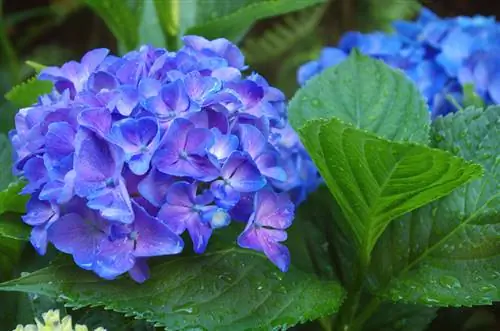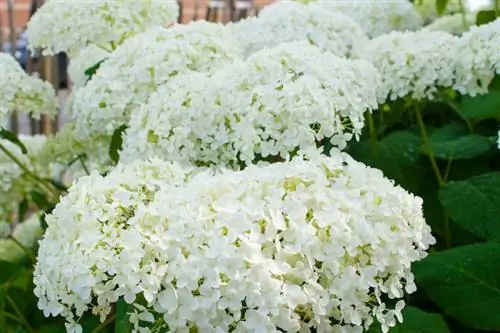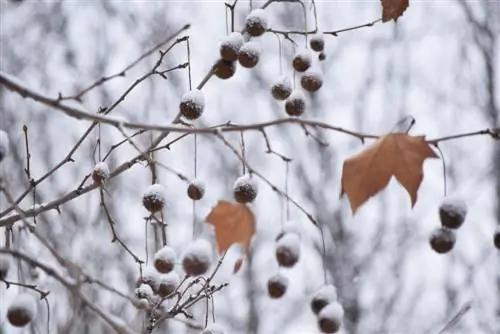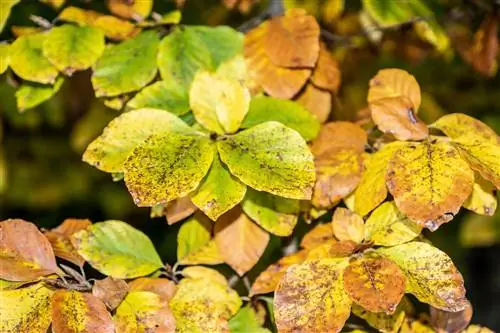- Author admin [email protected].
- Public 2023-12-25 17:45.
- Last modified 2025-01-23 11:20.
The first hydrangeas came to us from China and Japan, where the garden beauties quickly found a large following. There are many legends surrounding the botanical and German names of the plants, some of which are just as enchanting as the flowers of the hydrangea.

What is the botanical name of hydrangea?
The botanical name of the hydrangea is Hydrangea, which comes from the Greek terms hydro (water) and angeion (jug-shaped flower shape). Well-known species are Hydrangea macrophylla (garden hydrangea), Hydrangea arborescens (snowball hydrangea) and Hydrangea quercifolia (oak-leaved hydrangea).
Latin name of hydrangea
The name Hydrangea first appeared in 1739 in Flora Virginica, a description of the plants that thrive in the North American state of Virginia. It is derived from the Greek terms hydro=water and angeion. Angeion describes the pitcher-shaped flower shape of the hydrangea.
Hippolito Ruiz Lopez and Antonio Pavon y Jiminez collected wild forms of the hydrangea in South America and also described the flowering shrub in 1798. However, they gave the hydrangea the no longer used genus name Cornidia.
Hortensias conquer German parks
The presumed first hydrangea in Europe was introduced from America in 1736 by Peter Collison. Around the year 1800, the first hydrangeas, cultivated in large pots, adorned the wonderfully landscaped parks of Pillnitz and Weesenstein in Saxony
Origin of the German plant name
According to legend, the botanist Commerson gave the name Hortensia in 1771 in honor of a lady. Three women who are close to the plant lover can be considered for this:
- Hortense Barré, who accompanied the young botanist on an expedition to America.
- The well-known astronomer Hortense Lepaute, the wife of a good friend of Commerson.
- Madame Hortense de Nassau, a daughter of the Prince of Nassau. Her father also took part in a scientific trip with Commerson.
All these explanations for the naming sound very romantic. However, it is most likely that the name was simply derived from the Latin term “Hortus” (garden). In any case, the opinion that the hydrangea was named after a daughter of Empress Josephine is incorrect. The girl was born several years after the German naming of the hydrangea.
Known species and their botanical names
- Hydrangea mycrophylla (garden hydrangea, farmer's hydrangea), named Hydrogena hortensia by Siebold in 1829 and Hydrangea hortensis by Smith in 1799
- Hydrangea arborescens (Viburnum hydrangea)
- Hydrangea quercifolia (Oak-leaved hydrangea)
- Hydrangea anomala ssp. Petiolaris (climbing hydrangea)
- Hydrangea paniculata ssp. “Grandiflora” (panicle hydrangea)
Tips & Tricks
You can see beautiful collections of flowering hydrangea bushes in Belgium, Holland and England. Almost 800 species of romantic flowering shrubs are currently cultivated in France.






